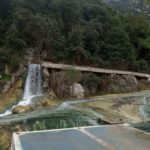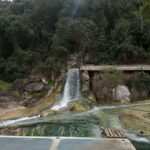Discover the rich history of ancient Greek warfare by visiting the iconic Leonidas Monument in Sparta, Greece. This impressive structure, standing for over 2,500 years, commemorates the brave warrior Leonidas and his heroic role in the Battle of Thermopylae.
The Leonidas Monument, resembling the Parthenon in Athens, is made of limestone and features three layers with fluted columns in Doric, Ionic, and Corinthian styles. Rising 35 meters tall with a base diameter of 30 meters, it commands attention and awe. Constructed in 478-479 B.C. and funded by the Peloponnesian League, this monument is a testament to the enduring significance of ancient Greek history.
Visitors to the Leonidas Monument can explore its grounds, delve into the small museum located inside, and marvel at the breathtaking panoramic view of Sparta and its surroundings from atop the monument. It’s an immersive experience that transports you back in time and allows you to appreciate the valor and sacrifice of ancient Greek warriors.
Key Takeaways:
- The Leonidas Monument in Sparta, Greece, is a testament to ancient Greek warfare and the bravery of Leonidas.
- Constructed over 2,500 years ago, the monument resembles the Parthenon and boasts impressive architectural features.
- Visitors can explore the monument, visit the small museum, and enjoy a panoramic view of Sparta from the top.
- The Leonidas Monument stands as a powerful reminder of the Battle of Thermopylae and the valor of the Greek city-states.
- Immerse yourself in ancient Greek history by visiting this iconic monument and paying homage to the warriors of the past.
The History and Significance of the Battle of Thermopylae
The Battle of Thermopylae is a legendary event that has left a profound mark on ancient history. Taking place in 480 BC, it pitted the Greek city-states, led by King Leonidas of Sparta, against the mighty Persian Empire, commanded by King Xerxes I. This clash of civilizations has become a symbol of Spartan bravery and heroism, showcasing the indomitable spirit of a few against overwhelming odds.
With a Greek force of around 7,000 soldiers, including the renowned 300 Spartans, facing a Persian army that numbered between 70,000 and 300,000, the Battle of Thermopylae was an extraordinary feat of valor and strategic prowess. The Greeks aimed to block the advance of the Persians at the narrow coastal pass of Thermopylae, where their limited numbers could negate the enemy’s numerical advantage.
Although the Greeks fought with unwavering courage, they were eventually defeated. However, their sacrifice and determination bought valuable time for the Greek city-states to regroup and ultimately repel the Persian invasion. The Battle of Thermopylae stands as a testament to the unyielding spirit of the Greek people and their ability to defend their homeland against all odds.
“Go tell the Spartans, stranger passing by, that here, obedient to their laws, we lie.” – Simonides
The Legacy of the Battle
The Battle of Thermopylae left behind a lasting legacy. It became a rallying cry for the Greeks and a symbol of their resistance against tyranny. The story of Leonidas and his 300 Spartans has inspired countless generations, highlighting the importance of honor, loyalty, and sacrifice in the face of adversity.
| Greek City-States | Persian Empire |
|---|---|
| Sparta | King Xerxes I |
| Athens | Massive Persian army |
| Other Greek allies | Overwhelming odds |
Today, the Battle of Thermopylae continues to captivate the imagination of people worldwide. It serves as a reminder that the actions of a few courageous individuals can shape the course of history. Visiting the site of Thermopylae allows us to connect with this remarkable past and truly appreciate the bravery and sacrifice of those who fought there.
Visiting the Site of Thermopylae Today
Despite the passage of time and the effects of erosion, the site of Thermopylae still holds historical and cultural significance. The main attraction is the Memorial of Leonidas and the 300 Spartans, which stands as a powerful testament to their bravery and sacrifice. This memorial features a massive stone wall that surrounds a bronze statue of King Leonidas, serving as a reminder of his leadership during the Battle of Thermopylae.
Adjacent to the memorial, visitors can explore the ancient ruins of Thermopylae, gaining insight into the strategic layout of the battlefield and the challenges faced by the Greek forces. The site also houses a small museum, which offers a glimpse into the history and significance of the battle. Here, artifacts from that time period are displayed, showcasing the weapons, armor, and other items used by the warriors who fought in the Battle of Thermopylae.
Although the visit to the site may not take long due to its size, it provides a unique opportunity to connect with the rich history of Greece and pay homage to the heroes of the past. The panoramic view from the site allows visitors to appreciate the natural landscape that played a crucial role in the battle. It is a place of reflection and contemplation, where one can imagine the courage and determination of the ancient warriors who stood their ground against overwhelming odds.
Table: Comparison of Ancient Ruins at Thermopylae
| Site | Description | Notable Features |
|---|---|---|
| Memorial of Leonidas | Commemorative structure dedicated to King Leonidas and the 300 Spartans | – Massive stone wall – Bronze statue of King Leonidas – Marble statues representing the river Eurotas and Mount Taygetos |
| Ancient Ruins | Remains of the battlefield, providing insights into the strategic layout | – Ruins of defensive walls – Archaeological remnants of the Greek and Persian forces |
| Small Museum | Exhibition showcasing artifacts from the Battle of Thermopylae | – Weapons and armor used by warriors – Historical information and visual displays |
While the visit to Thermopylae itself is a relatively short experience, it is recommended as part of a broader tour of mainland Greece. Combining a visit to Thermopylae with other historic sites, such as the ruins of ancient Sparta or the Acropolis of Athens, offers a more comprehensive understanding of ancient Greek history and culture. Together, these sites provide a captivating journey through time, allowing visitors to appreciate the contributions and sacrifices made by the ancient Greeks in shaping the world we know today.
How to Visit Thermopylae and Nearby Attractions
If you’re planning a trip to Greece and want to explore the historical site of Thermopylae, there are several transportation options available for you. The site is easily accessible by car or taxi from Sparta, which is approximately 195 kilometers (121 miles) away. If you’re coming from Athens, it takes about 2 hours and 30 minutes by car.
Another option is to fly to Athens and then take a taxi to Sparta, which would cost around 100 euros. While there are train and bus options available, they are not recommended due to longer travel times. Once you arrive in Sparta, it is advisable to rent a car for the day. This will give you the flexibility to visit Thermopylae and other nearby attractions at your own pace.
In addition to Thermopylae, there are several other historic sites worth exploring in the area. You can visit the ruins of ancient Sparta for a glimpse into the city’s rich history. The Acropolis of Athens, Mount Olympus, and the Temple of Artemis in Ephesus, Turkey, are also fascinating sites that offer further insights into ancient Greek history and culture. These attractions make for an unforgettable day trip from Thermopylae.
So, if you’re interested in visiting Thermopylae and immersing yourself in ancient Greek history, plan your trip to Sparta and take advantage of the various transportation options available. With easy access to the site and nearby attractions, you’re bound to have a memorable and educational experience exploring this historically significant region.
FAQ
What is the history behind the Leonidas Monument in Sparta, Greece?
The Leonidas Monument was built over 2,500 years ago to commemorate Leonidas, a brave warrior who died during the Battle against Xerxes I of Persia.
How is the Leonidas Monument constructed?
The monument is made of limestone and resembles the Parthenon in Athens, although it is smaller in size. It consists of three layers with fluted columns – Doric, Ionic, and Corinthian styles.
What can I do when visiting the Leonidas Monument?
Visitors can explore the monument, visit the small museum inside, and enjoy a panoramic view of Sparta and the surrounding areas from the top.
What is the significance of the Battle of Thermopylae?
The Battle of Thermopylae is one of the most famous battles in ancient history and symbolizes Spartan heroism and resistance against overwhelming odds. It bought time for the Greek city-states to regroup and repel the Persian invasion.
Can I visit the site of Thermopylae today?
Yes, the site of Thermopylae can still be visited today. The main attraction is the Memorial of Leonidas and the 300 Spartans, which features a massive stone wall, a bronze statue of King Leonidas, and marble statues representing significant landmarks of Sparta.
How can I travel to Thermopylae and nearby attractions?
Thermopylae is easily accessible by car or taxi from Sparta. If coming from Athens, it takes about 2 hours and 30 minutes by car. Another option is to fly to Athens and then take a taxi to Sparta. There are also train and bus options available, but they have longer travel times.
Source Links
- https://www.greekboston.com/travel/leonidas-monument-sparta/
- https://offbeatgreece.com/visit-thermopylae/
- https://www.thetravel.com/thermopylae-300-site-sparta-movie-location/
Author Profile
-
Welcome to e-thermopyles.gr, your gateway to the fascinating world of Thermopylae and the legendary Spartans. My name is George Margaritis, and I’m the proud owner and writer behind this website.
A Passion for History and the Spartan Legacy
I consider myself fortunate to call the historic site of Thermopylae my home. From a young age, I was captivated by history, and in particular, the incredible tale of the Battle of Leonidas in Thermopylae. The valiant stand of King Leonidas and his 300 Spartans against overwhelming odds has left an indelible mark on the annals of history.
As I delved deeper into this captivating story, my fascination only grew. The bravery, strategy, and sacrifice of those Spartan warriors resonated with me, and I wanted to share this rich history with the world. That’s why I created e-thermopyles.gr, a platform dedicated to exploring and uncovering the depths of knowledge surrounding Thermopylae and the Spartans.
Latest entries
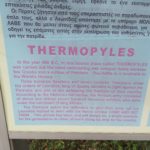 HistoryOctober 31, 2023Exploring Why is the Battle of Thermopylae Interesting
HistoryOctober 31, 2023Exploring Why is the Battle of Thermopylae Interesting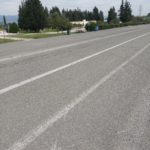 GuidesOctober 31, 2023Your Guide to the Athens to Thermopylae Train Journey
GuidesOctober 31, 2023Your Guide to the Athens to Thermopylae Train Journey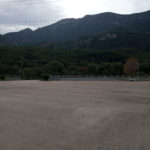 GuidesOctober 31, 2023Uncover the Mystery: Where is Thermopylae Today?
GuidesOctober 31, 2023Uncover the Mystery: Where is Thermopylae Today? GuidesOctober 31, 2023Uncover History by Visiting Thermopylae – A Travel Guide
GuidesOctober 31, 2023Uncover History by Visiting Thermopylae – A Travel Guide



